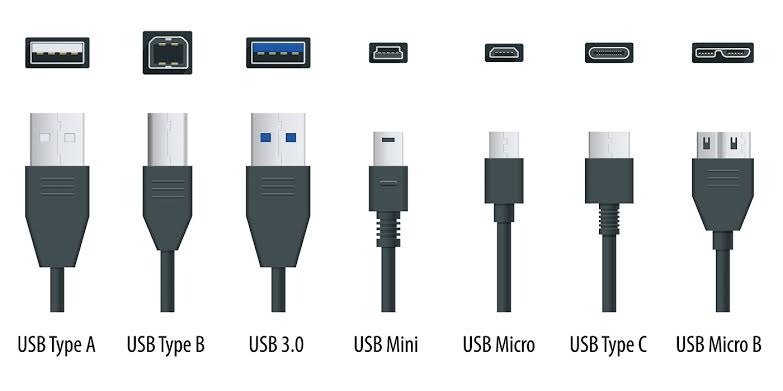
USB connectors are designed to access the different wires in USB cables and their capabilities, allowing them to transfer data and power to devices that need it and offer an instant connection between host computers and peripherals.
There are many different types of audio cables and connectors and it is important to ensure that you have purchased the correct one to make sure that your audio equipment will work with your USB connectors.
A USB audio interface allows for seamless integration and transfer between audio sources, such as microphones and instruments, and computers, laptops and tablets. The audio interface is there to convert an analogue signal into digital data for the purpose of recording, and there are a number of different USB connectors that can help with this.
Computers and adaptors
The computers and mobile devices of today come with a wide selection of ports, from now traditional USB connectors to the new USB Type-C and Thunderbolt 3 ports. People who are familiar with common USB connectors can still be baffled by the adaptors or wires that may now be needed to successfully plug their device into a TV, monitor, network or other peripheral.
Ports need to be kept in mind by those looking for new laptop or desktop computers. If attaching to a specific device on the go is required then it is a good idea to look for one that has that particular connector already built in, or at least be aware of the type you will need to connect with your new system.
3.55 mm audio jack
This is the world’s most common audio jack, also sometimes just referred to simply as a headphone jack, and can be found on the majority of computers, phones and tablets, connecting to most of the wired speakers and headphones in the world.
The majority of current devices include both mic and headphone jacks into the same port, unlike older models. Devices that do not have a 3.5mm jack can purchase a wired USB headset, get an adapter or have a wireless Bluetooth audio device attached instead.
USB/USB Type-A
USB Type-A is the by far the most common USB connector for laptops and desktops, featuring a simple rectangular shape and capable of USB 2.0 or 3.0 speeds depending on the particular hardware involved.
USB Type-B
This square USB connector is used on a number of docking stations, hubs and printers as an input port, but not on computers. A USB Type-A to Type-B wire is required for use with these devices, and is normally provided with the peripheral.
USB Type-C
This slim USB connector is the way of the future and can already be found on several devices, likely to replace its predecessors and micro USB on every system soon. Its thinner shape means it fits with very svelte laptops and is reversible, while also supporting various different standards though not necessarily with the same exact functionality.
Thunderbolt 3
The fastest connector currently on the market and able to deliver data four times faster than the fastest USB connector and able to output to two 4K monitors simultaneously.
Other forms of USB connectors you can buy in Australia include USB 2.0, USB 3.0, USB 3.1 Gen 1, USB 3.1 Gen 2, Micro USB, and the Mini USB.




